Dovetail Saw Making Workshop – Day 2

The saws began to take final shape early on Day 2. My strategy for toothing the plate long before anything else is fully completed became clear, as that finished toothed edge with no set was used to cut the slot in the handle for the saw plate itself. It worked perfectly.

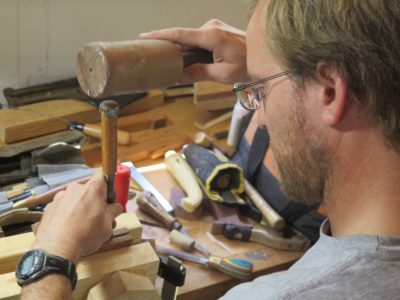
Once the saw plate was fitted to the handle it was time to begin the final assembly process. This meant that the saw plate had to be inserted into the back, and the open mortise for the back had to be laid out and cut into the handle.

Once the pieces were all fitted together temporarily, it was time for pulling it all back apart and undertaking the final finishing of the plate. As I said, I do not set the teeth of these tiny saws. Instead I taper the plates from the top to within about 1/6″ of the teeth gullets with coarse sandpaper or a pumice block, then increasingly finer abrasives until the “look” was the way they wanted. Using blued spring steel for the plates is exceedingly helpful for this process. I’ve measured the effect of abrading the plate such that the bluing is fully removed and the plate polished to a “brushed steel” appearance, and it is something around one-half of a ten-thousandth of an inch.
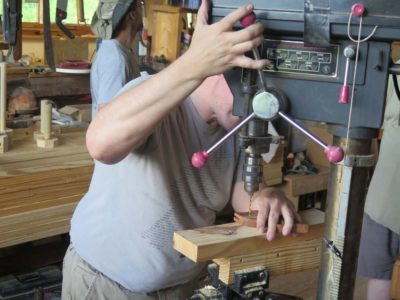
The final step in the assembly is to drill the holes through the handle and the plate to fasten everything together with brass binding posts. I must give a shout out to Chris Cianci for his technique of breaking the initial lay-out hole through the spring steel plate by striking with a center punch, then flipping the plate and repeating. After a couple back-and-forths with this the spring steel shatters in the designated location. This makes drilling a breeze. A slight counter-sink at each hole for the screw heads, and assembly was soon finished.


By mid-afternoon completed saws were emerging from the efforts.
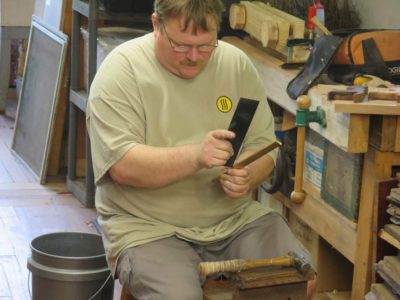

Rather than having the participants take the handles to final completion we decided to embark on a second saw with a 10″ x 2″ x .015 plate, employing a sawn slotted brass back, compared to an 8″ x 1-1/2″ x .020 with a bent spine for the first one. After the first saw, the second went so much faster. Once again there was fitting and pounding to make sure the back and the plate went together well.

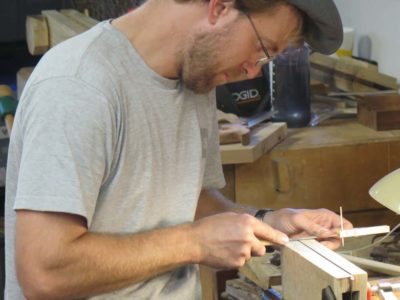
Then on to more teeth cutting, this time 12 t.p.i. rather than the 16 t.p.i. for the first one. Much to their delight and in keeping with my promises, the leap in skill of the second sharpening versus the first was notable in both quality and speed.


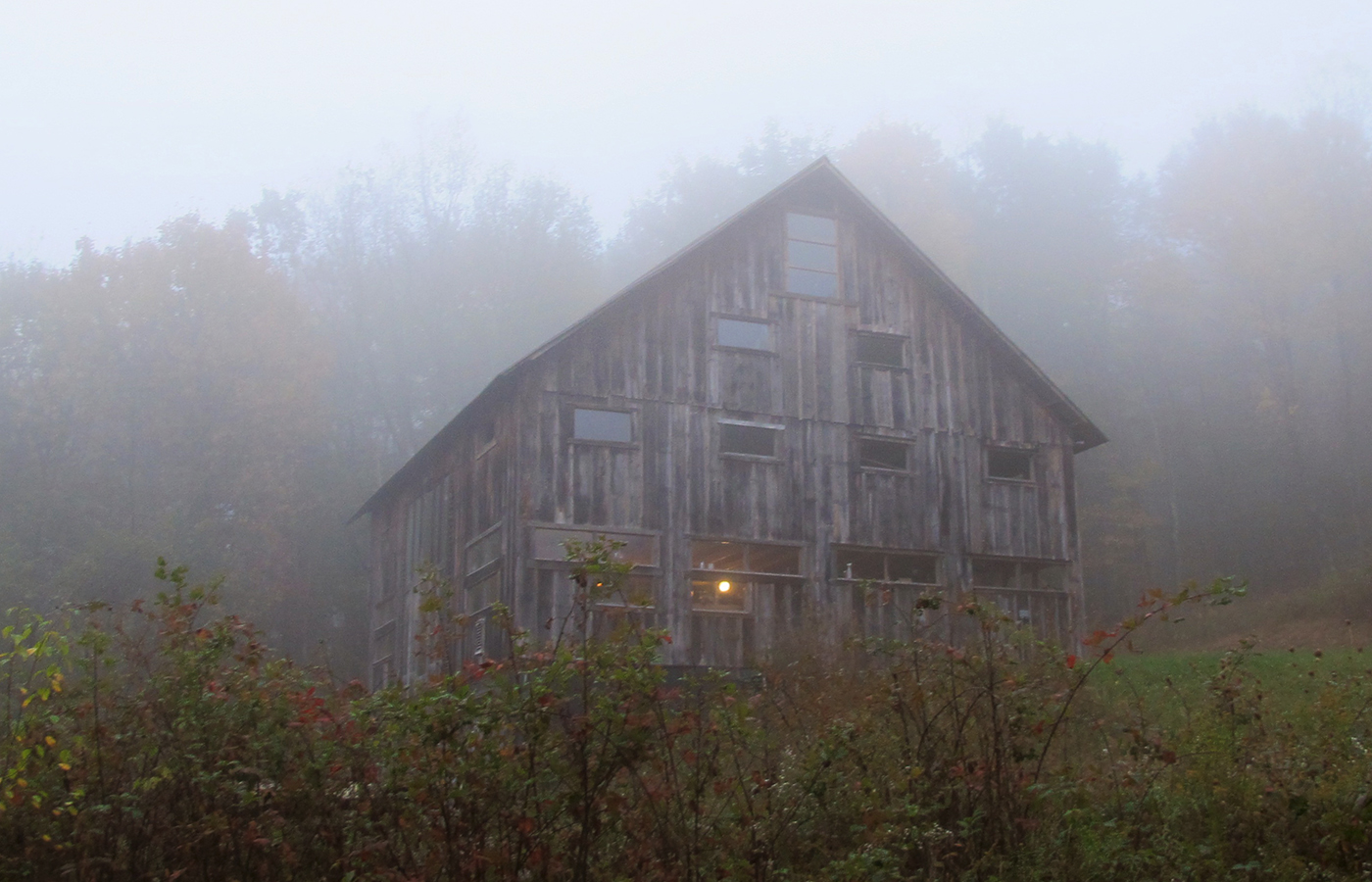
Join the Conversation!